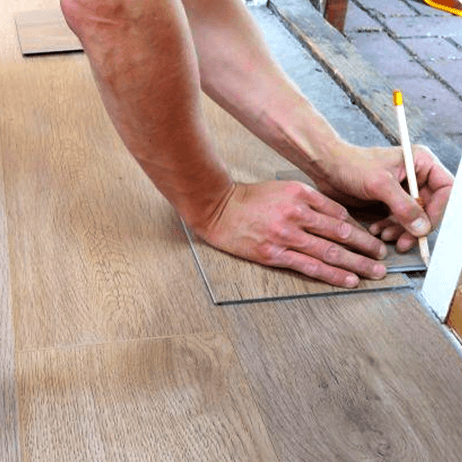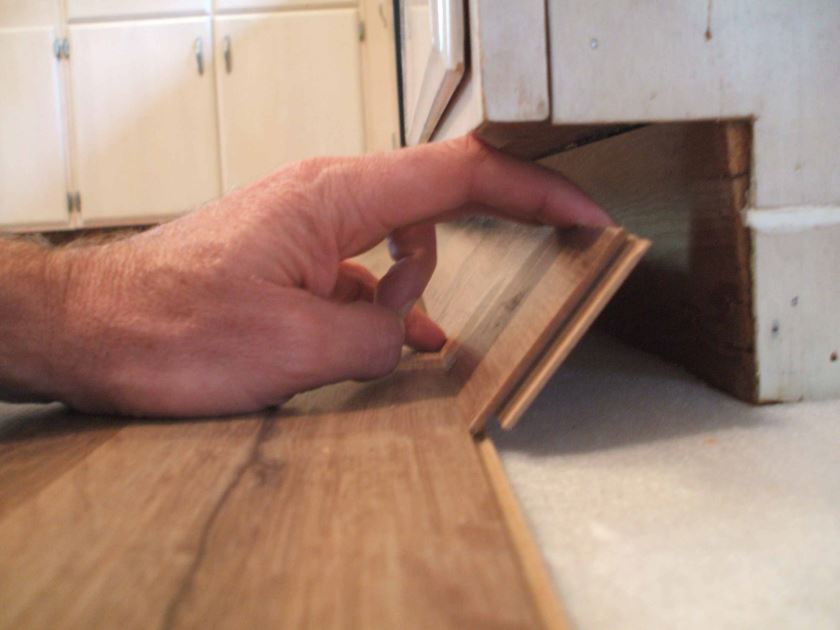
Flooring manufacturers usually recommend buying more floors than the required amount, depending on the area desired.
This amount is estimated by some to be 20%. So for a room of 20 square meters, you will need about 24 square meters of flooring.
There are few building materials that, like flooring, need to be purchased separately. For example, if you buy a window to make sure it’s the right size, you won’t buy more extra windows. Buying extra flooring is not a ploy by flooring salesmen to persuade their customers, it is a natural part of the flooring installation process and should be followed for any type of flooring, from laminate to engineered timber or tile.

If you want to install your desired flooring, you need to know how much additional flooring you need, in a nutshell:
Since the area of the room does not always match the materials needed for it, additional flooring must be purchased. For better understanding, for example, 4.5-centimeter tiles will never fit in a 130-centimeter wide room. As a result, either additional tiles must be purchased or cut tiles from other parts of the floor must be used. Large rolls of carpet 3 or 4 meters wide are usually cut and sewn, as rooms are rarely exactly 3 or 4 meters wide.
Defective materials sometimes dictate the amount of additional materials needed. Generally, the more natural the material used, the more likely it is to have defective materials. Hardwood tends to have more defective parts than artificial flooring such as laminate or vinyl flooring.
Luxury vinyl siding and laminate flooring
For laminate or vinyl flooring, you should buy between 5 and 10% extra of the vinyl flooring or laminate or planks. Defective materials and parts are rare to find in synthetic products, so extra foam is used to trim the edges.
Ceramic tiles
Buy between 5 and 15% extra ceramic tiles. The size of the tiles affects their waste. Ceramic tiles can easily be cut and used elsewhere. In some cases, even mosaic tiles can fit well in the room. Large tiles usually need to be cut. It is common for tiles to break during shipping.
Wall-to-wall carpeting
Carpets are usually available in large rolls 3 to 4 meters wide. Carpet sellers recommend buying a carpet that is 10% larger than you expect for your space when purchasing a carpet.
Hardwood Flooring
Natural flooring should always be purchased in larger quantities compared to man-made flooring. In these cases, buy 20% more than the amount of wood flooring you need.
This figure is made up of 100% of the flooring needed to cover the entire room, plus 15% lost during installation and 5% for defective material.
Engineered wood flooring
Most of the disadvantages of a natural hardwood floor are usually eliminated by engineered flooring. Purchase an additional 15% engineered floor to account for the natural waste.
– If you hire an installer to install good flooring, order extra. You certainly don’t want the installer to finish his job early or halfway through due to lack of materials.
– If you bought the flooring locally and are confident in the store’s return policy, it may be best to order extra. This is because you can often return the materials for a refund. Since some retailers may not do this, you should make sure beforehand.
– On the other hand, if you bought the flooring online, there will be additional postage charges for returning the materials. So don’t go overboard with buying extra figures.
While wastage is not good, the presence of waste on flooring is always a given and to be expected.
wastage are pieces of flooring that have been cut off or otherwise discarded, are not in the area, and sometimes cannot be reused. Flooring manufacturers typically estimate the amount of wastages in flooring installations to be between 5 and 20 percent.
Almost all flooring installation methods may require cutting. The most common reason for cutting flooring is that it abuts the wall during installation. For example, if the flooring is hardwood, an extra board is usually removed and cut to fill the gap. In these cases, the expansion gap is usually accounted for.
The remnants of this plank are usually used in the next rows of planks. Leftover planks that are too short or have nowhere to be used on the floor become wastage or stockpile waste.
Large plank boards or tile floors, as is usual, have the highest amount of wastage. Smaller floor coverings, especially 25 mm mosaics, have the least waste because it sometimes happens that without The cuttings are exactly the same size as the room.
Rooms with many obstructions also increase the amount of wastage. Toilets, closets and vents are examples of obstacles that the flooring must overcome.
Rooms that are square or rectangular waste lees materials than rooms that are curved or have extra niches. Installing hardwood flooring with a diagonal pattern, although not very common, increases the amount of waste in installation.
With hardwood floors, you can expect up to about 5% of the material to be defective. Some of these defective materials can sometimes be reused in small areas or cabinets.
In some cases, hardwood floors may not have a tongue and groove. There may be water stains on it. It may be broken or cracked, or the floor may have discolored when exposed to sunlight.
Most hardwood floor installers are skilled at dealing with imperfect materials. Hardwood floors that do not have tongues or grooves can be nailed to the end of the room. Cracked floors can be cut to the point where they crack, and stained floors can be installed in areas that are less exposed.
Engineered wood generally has far fewer defects than hardwood. Ceramic and porcelain tiles sometimes have multiple fractures.